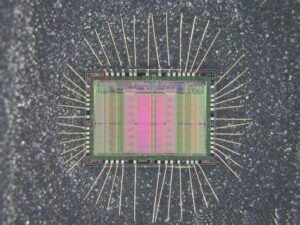The PIC18F8520 microcontroller, a popular MCU from Microchip, is widely used in embedded systems due to its robust architecture and versatile features. However, there are scenarios where engineers or researchers may need to dump the EEPROM file from this secured chip, whether for reverse engineering, firmware analysis, or data recovery. This process often involves overcoming protected or encrypted barriers, making it a challenging yet intriguing task.

To extract the EEPROM data, one must first gain access to the microcontroller’s memory. This can involve cracking or unlocking the chip’s security mechanisms, which may include decrypting or decoding the firmware stored in the flash or EEPROM. Advanced techniques such as reverse engineering the binary file or replicating the source code are often employed to bypass these protections.

The process typically begins with connecting to the MCU’s programming interface, such as ICSP (In-Circuit Serial Programming). Specialized tools and software are then used to dump the memory contents, including the program and data stored in the EEPROM. In cases where the firmware is locked or secured, attackers might use brute-force methods or exploit vulnerabilities in the chip’s architecture to break the protection.

Once the archive is successfully extracted, the binary file can be analyzed to understand the microcontroller’s operation or to replicate its functionality. This is particularly useful in scenarios where the original source code is unavailable, or when debugging legacy systems.
While these methods can be powerful, it’s important to note that hacking or attacking a microcontroller without proper authorization is illegal and unethical. Legitimate uses, such as recovering lost data or analyzing firmware for security improvements, should always adhere to legal and ethical guidelines.
In conclusion, dumping the EEPROM file of a PIC18F8520 MCU requires a combination of technical expertise and specialized tools. Whether for reverse engineering or data extraction, understanding the chip’s architecture and security features is key to successfully accessing its protected memory.
During interrupts, the return PC address is saved on the stack. Additionally, the WREG, STATUS and BSR registers are saved on the fast return stack. If a fast return from interrupt is not used (see Section 5.3 “Data Memory Organization”), the user may need to save the WREG, STATUS and BSR registers on entry to the Interrupt Service Routine.
Depending on the user’s application, other registers may also need to be saved by Reading Microchip PIC16LC620 Software. Example 10-1 saves and restores the WREG, STATUS and BSR registers during an Interrupt Service Routine.
The Timer0 module has the following features:
- Software selectable as an 8-bit or 16-bit timer/counter when Dump MCU PIC18F8520 Eeprom File
- Readable and writable
- Dedicated 8-bit software programmable prescaler
- Clock source selectable to be external or internal
- Interrupt on overflow from FFh to 00h in 8-bit mode and FFFFh to 0000h in 16-bit mode through Reading MCU PIC16LF946 Flash
· Edge select for external clock
Figure 11-1 shows a simplified block diagram of the Timer0 module in 8-bit mode and Figure 11-2 shows a simplified block diagram of the Timer0 module in 16-bit mode.
The T0CON register (Register 11-1) is a readable and writable register that controls all the aspects of Timer0,
including the prescale selection. Timer0 can operate as a timer or as a counter after Dump MCU PIC18F8520 Eeprom File.
Timer mode is selected by clearing the T0CS bit. In Timer mode, the Timer0 module will increment every instruction cycle (without prescaler) in the process of Copy Microcontroller PIC16F946 Protected Code. If the TMR0 register is written, the increment is inhibited for the following two instruction cycles. The user can work around this by writing an adjusted value to the TMR0 register to Crack MCU.

